
Krishna Singh
@krishnasinghdev
Full-stack dev from India | Next.js, TypeScript, PostgreSQL, MERN | Building fast web apps | Open to remote gigs 🌱
Hey @grishka11, thanks for NearDrop bridging the Android-Mac gap! 🙌 It works seamlessly for quick file sharing. I've been using it for a while; everyone should check it out and support it on @github. @GithubProjects
Released a new version of NearDrop that adds support for sending files using QR codes. github.com/grishka/NearDr…
Fixed a tricky @typescript issue in our codebase today. We were using 'any' types in several places, which defeated the purpose of using TS. Replaced them with proper type definitions and caught 6 actual bugs in the process. - Type safety isn't just for show - it catches…
The most important skill for a developer isn't coding - it's #communication. - I've seen brilliant coders fail because they couldn't explain their ideas, and I've seen average coders succeed because they could collaborate effectively. - Writing clear comments, documentation,…
Sunday thought: Code comments should explain WHY, not WHAT. Bad comment: // Increment the counter counter++; Good comment: // Must increment before validation due to legacy API requirements counter++; The code already shows what you're doing. Comments should explain the…
The 'return early' pattern has made my functions so much cleaner: - Reduces nesting and makes edge cases obvious. - It's a simple change that makes code much more readable. Do you prefer early returns or other patterns?
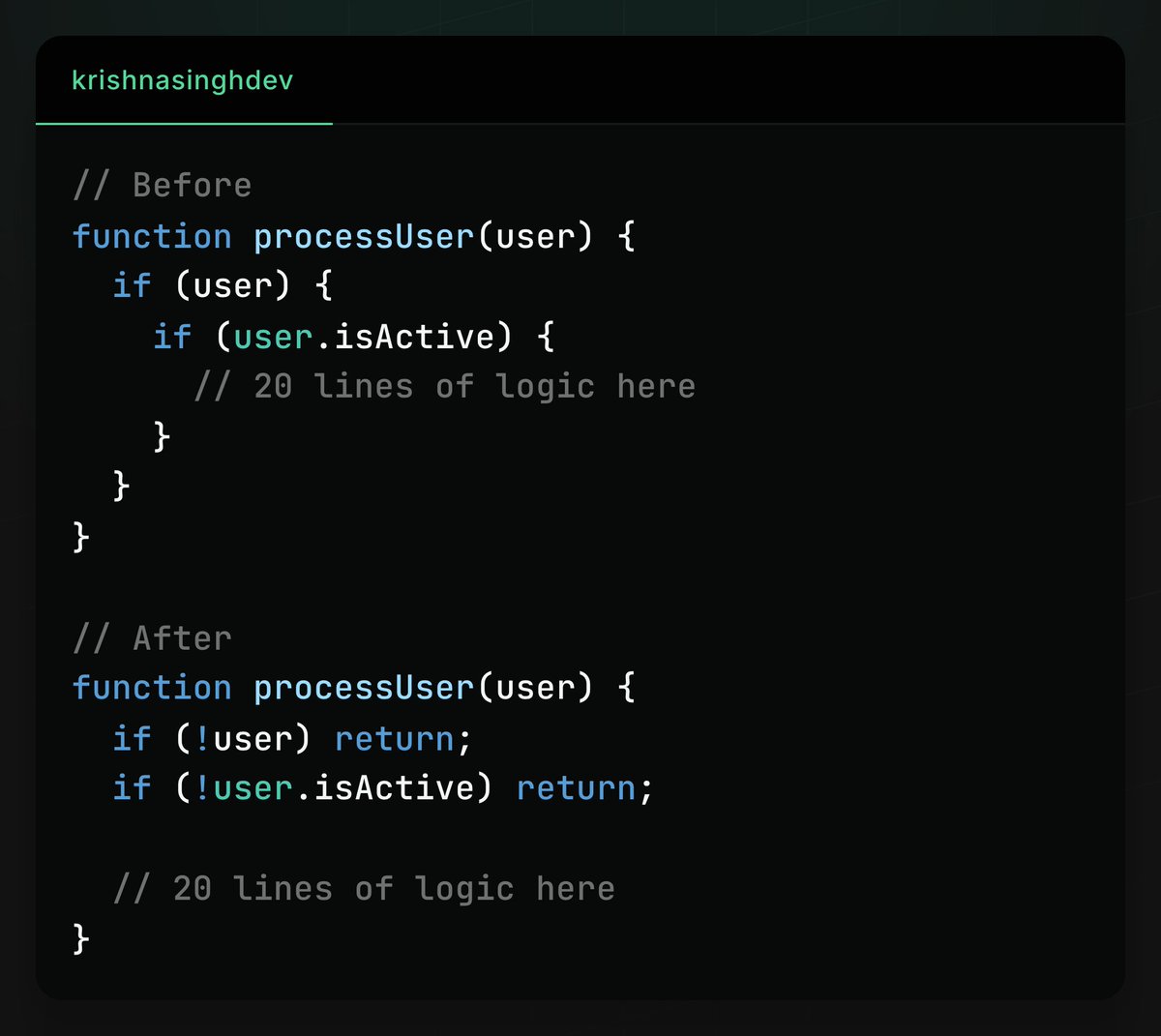
A @React performance tip I wish I'd known earlier: Use the React DevTools Profiler tab to find components that re-render too often. - It shows which components were rendered and why, with timing info. - I found that a deeply nested component was causing our entire app to…
Local storage vs. cookies vs. session storage - when to use each: 🍪 Cookies: When you need data on both client & server or need to set expiration policies 📦 Local Storage: For larger client-only data that should persist between sessions ⏱️ Session Storage: For temporary data…
#React state management in 2025: I've gone full circle. - Started with plain useState - Then moved to Redux | Zustand for everything - Then tried Context API + useReducer - Then tried various libraries - Now? Back to useState for most components Global state is overused. Most…
The most important thing I've learned about web performance: Measure first, optimize second. So many times I've guessed what made a page slow, only to discover I was optimizing the wrong thing. Lighthouse in Chrome DevTools gives you a breakdown of what's actually slowing…
#JavaScript Array methods I use almost every day: - map(): Transform items - filter(): Keep only certain items - reduce(): Combine items into a result - find(): Get the first match - some(): Check if any match - every(): Check if all match These let you write clear, functional…
Browser #DevTools feature I wish I'd known years ago: - You can edit and re-run any request in the Network tab. - Right click → Edit and Resend lets you modify headers, body, etc. and see how the API responds. - Perfect for testing different params without writing code or…
Here's a @React problem I see all the time: re-renders caused by new object references in props. This component re-renders on EVERY parent render: Or use useMemo() if the object needs to be dynamic. Small change, big performance win.

I've been asked a few times about #JavaScript closures lately. Here's my simplest explanation: A closure is just a function that remembers the variables around it, even when that function runs elsewhere. The inner function 'closes over' and remembers the count. That's it!…
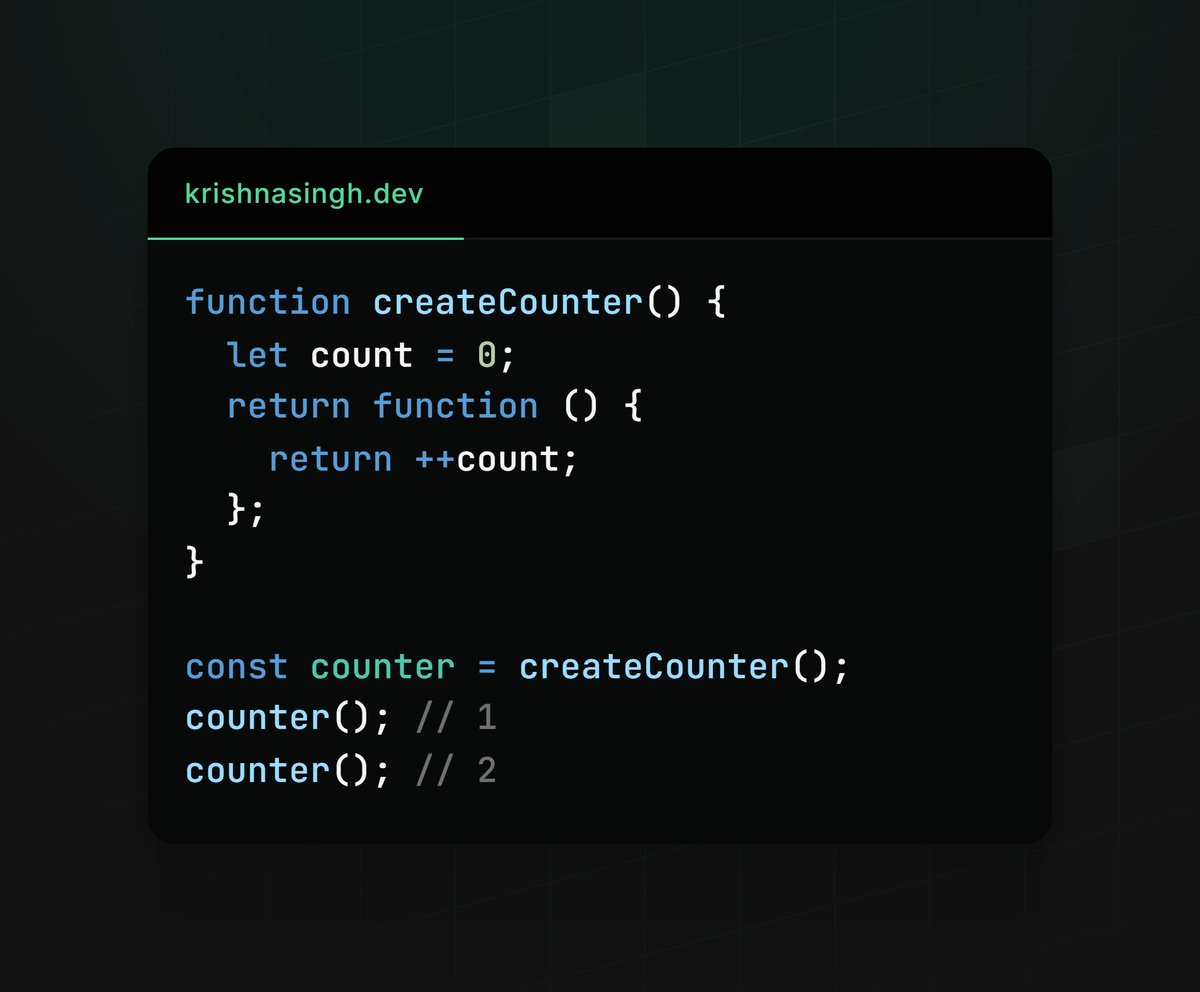
I've noticed a lot of #devs struggling with JavaScript Promises lately. Here's how I think about them: What Promise patterns do you use most often?
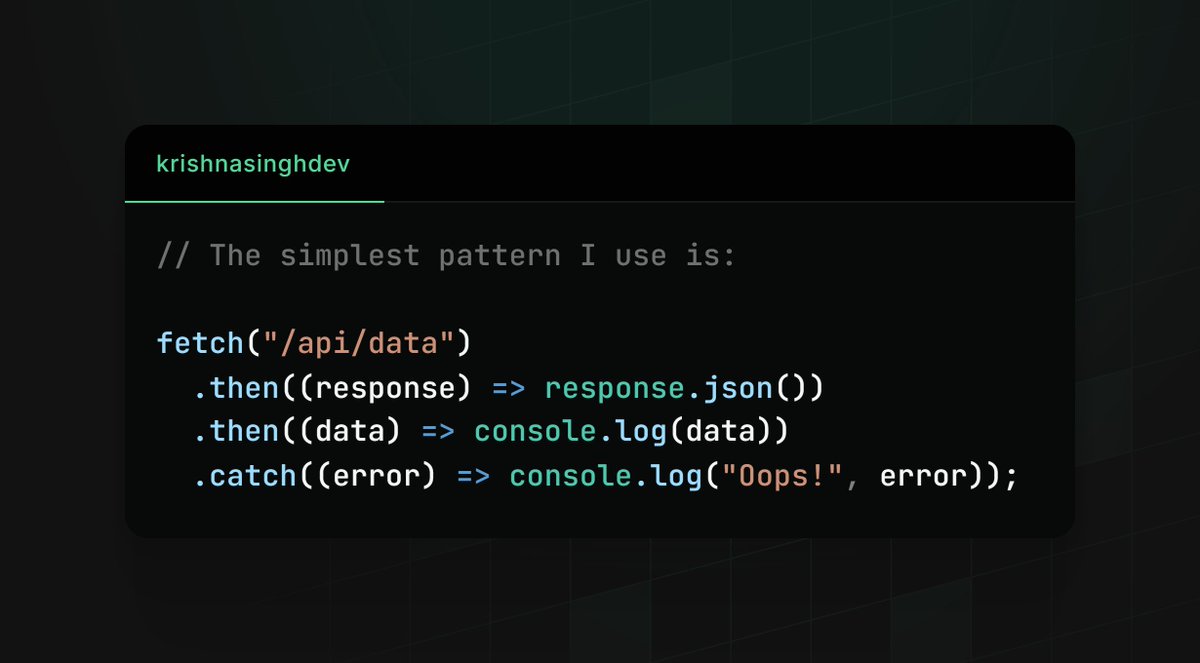
The Progressive Loading Pattern - Better UX Benefits: 1. Smooth loading experience 2. Better perceived performance 3. No UI blocking 4. Great for large lists #follow for more fun insights! 🌱

The Selector Pattern - Efficient State Access Why it's efficient: 1. Memoized selections 2. Prevents unnecessary updates 3. Better performance 4. Clean state access #follow for more fun insights! 🌱
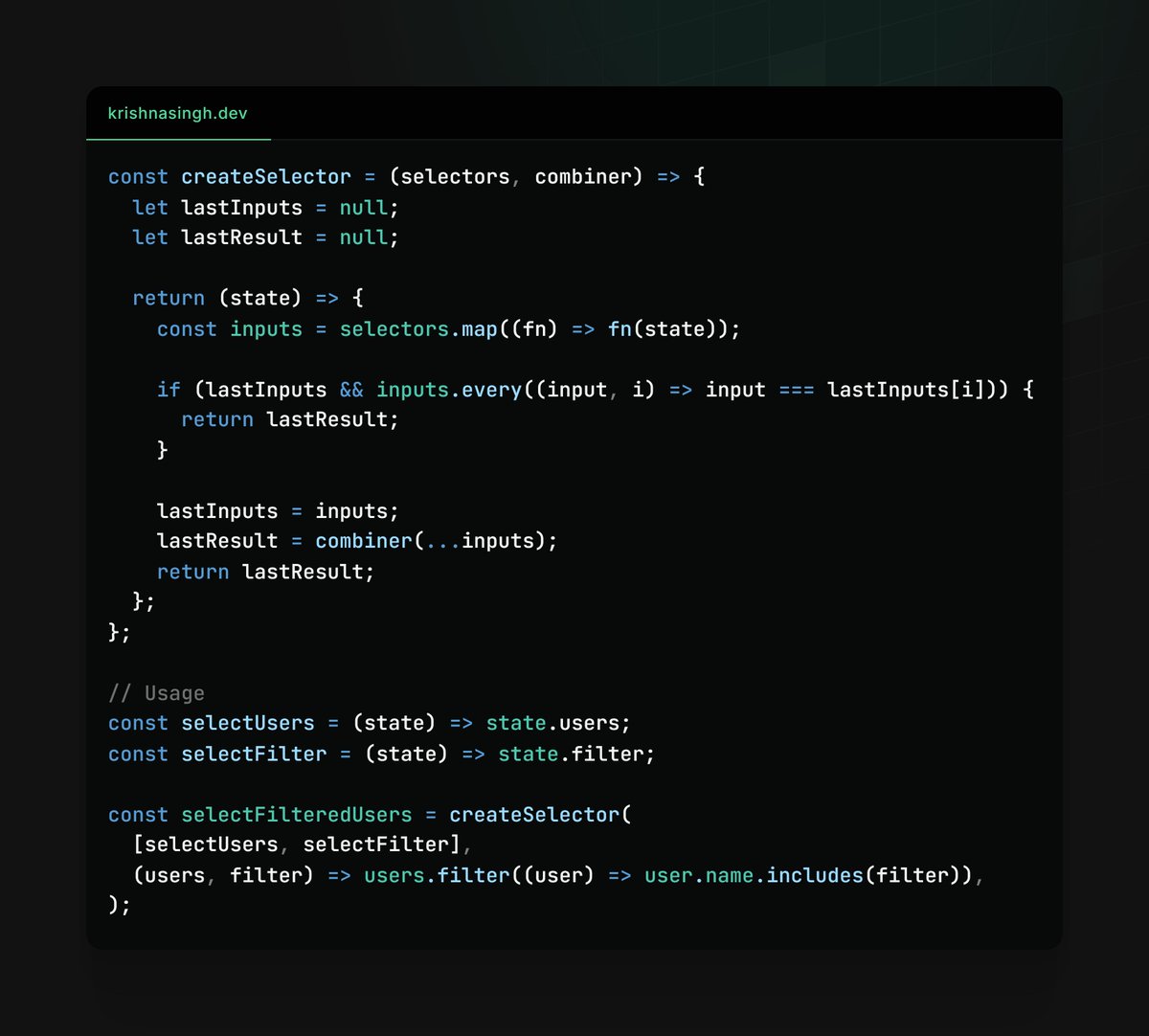
The Middleware Pattern - Extensible Operations Benefits: 1. Extensible pipeline 2. Pluggable operations 3. Clean composition 4. Easy to test #follow for more fun insights! 🌱
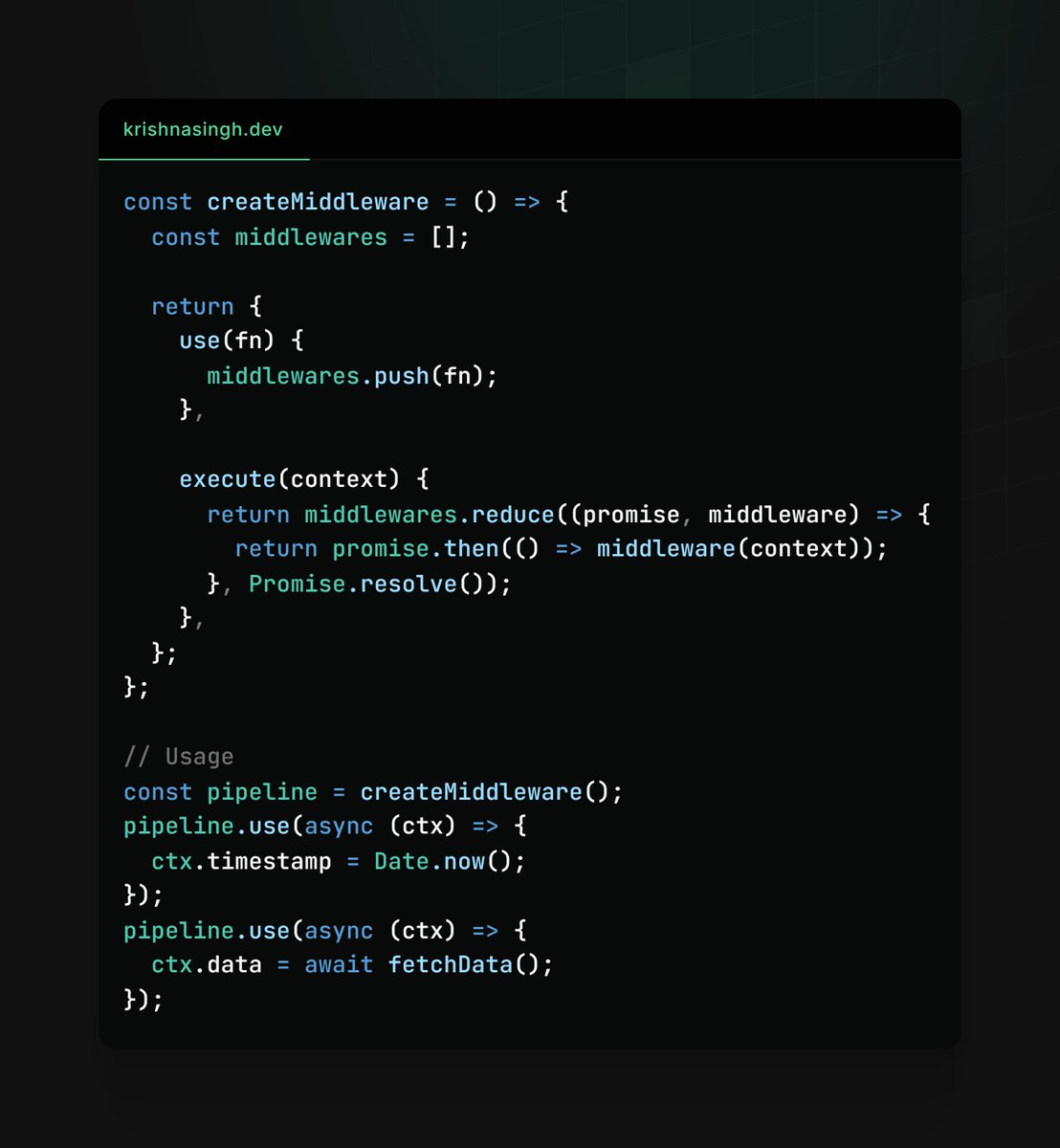
The Event Source Pattern - Track State Changes Why it's amazing: 1. Complete audit trail 2. Time travel debugging 3. Event replay capability 4. Perfect for complex state #follow for more fun insights! 🌱
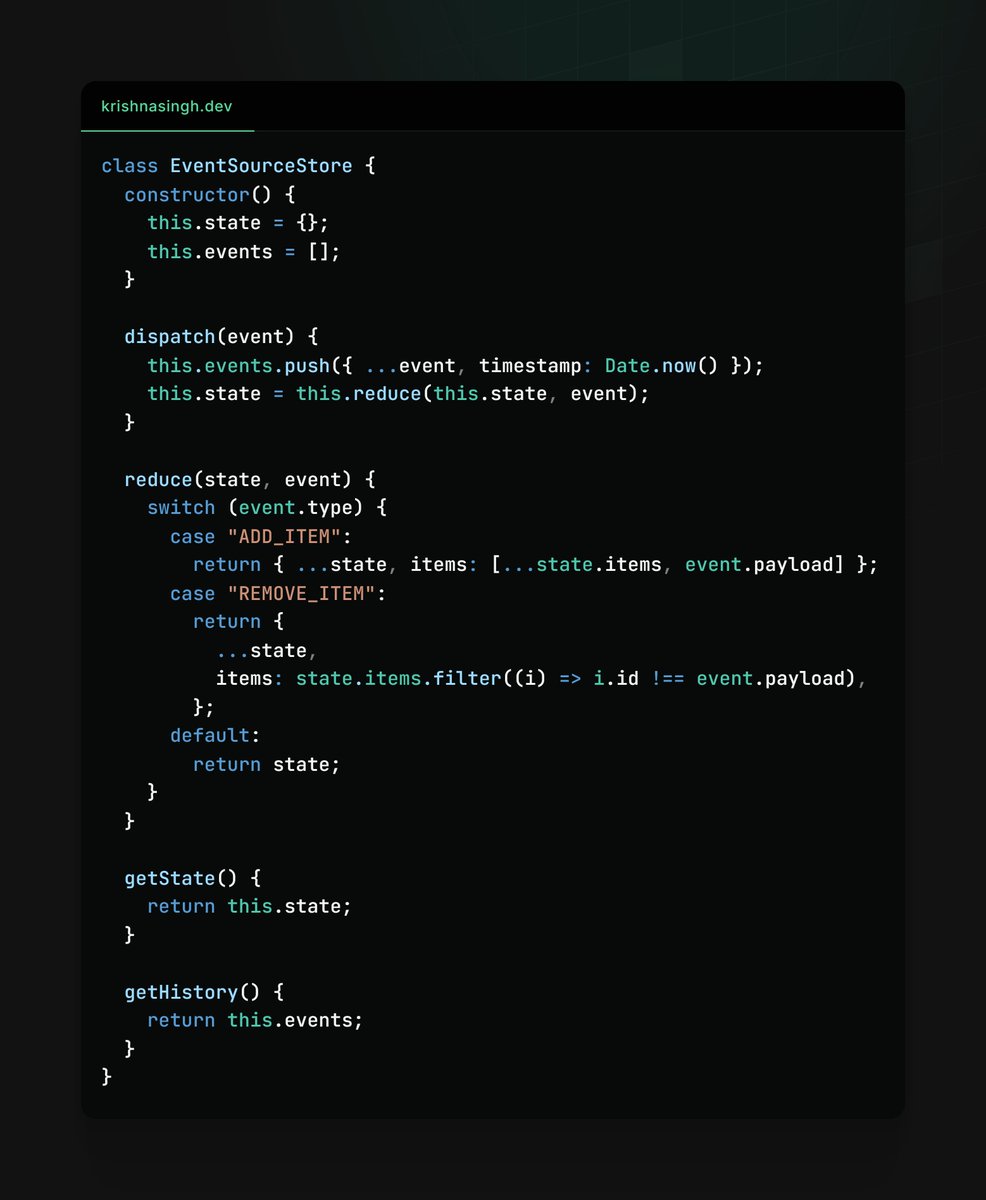
United States เทรนด์
- 1. $APDN $0.20 Applied DNA N/A
- 2. $SENS $0.70 Senseonics CGM N/A
- 3. $LMT $450.50 Lockheed F-35 N/A
- 4. Sonic 06 2,650 posts
- 5. Peggy 33.4K posts
- 6. Zeraora 15.7K posts
- 7. Cory Mills 31.8K posts
- 8. Berseria 5,178 posts
- 9. #ComunaONada 3,911 posts
- 10. Randy Jones 1,079 posts
- 11. Comey 40.3K posts
- 12. $NVDA 46.3K posts
- 13. Cooks 10.4K posts
- 14. #Stargate N/A
- 15. Ryan Wedding 5,403 posts
- 16. Halligan 12.9K posts
- 17. Dearborn 387K posts
- 18. Rick Hendrick 1,333 posts
- 19. International Men's Day 88.9K posts
- 20. Kyler Gordon N/A
Something went wrong.
Something went wrong.
























































































